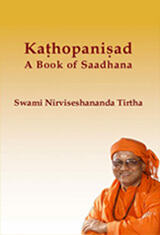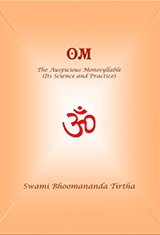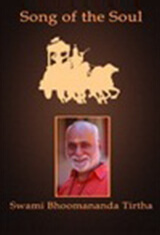Resources
description

Verses for Introspection
Shloka 100 drishtaanto naiva drishtah
Ma Gurupriya
Shloka 100 drishtaanto naiva drishtah
Ma Gurupriya
Transforming Power of SadGuru
दृष्टान्तो नैव दृष्टः त्रिभुवनजठरे सद्गुरोर्ज्ञानदातुः
स्पर्शश्चेत् तत्र कल्प्यः स नयति यदहो स्वर्णतामश्मसारम् ।
न स्पर्शत्वं तथाऽपि श्रितचरणयुगे सद्गुरुः स्वीयशिष्ये
स्वीयं साम्यं विधत्ते भवति निरुपमः तेन वाऽलौकिकोऽपि ॥
– शतश्लोकी १
dṛṣṭānto naiva dṛṣṭa: tribhuvanajaṭhare sadgurorjñānadātu:
sparśaścet tatra kalpya: sa nayati yad-aho svarṇatām-aśma-sāram ।
na sparśatvaṃ tathā’pi śrita-caraṇa-yuge sadguru: svīya-śiṣye
svīyaṃ sāmyaṃ vidhatte bhavati nirupama: tena vā’laukiko’pi ॥
– śataślokī 1
Translation:
In all the three worlds one is not able to see anything that illustrates the role of a Sadguru (a true spiritual preceptor), one who bestows enlightenment to the disciple. The philosopher’s stone is considered to have the wonderful property of converting iron that it touches into gold, instantly. But the philosopher’s stone can at best convert iron into gold, and not into another philosopher’s stone (that is itself). But the Sadguru transforms the disciple, who surrenders at the Guru’s holy feet, into one like Himself. Hence this is a transformation which far excels the other one, and therefore it is not anything worldly. Thus the Guru is incomparable in this regard. Truly, the spiritual role which the Guru plays in the life of a seeker is indeed supra-worldly.
Points for Introspection:
When a seeker understands that this world in essence is transitory, he develops an intense dispassion for the world and all the short lived pleasures which the external objects of the world offer. He then searches for “That” which is eternal and imperishable, realizing which he would attain the supreme felicity in life. In search of this supreme Reality, he seeks the close association of a Sadguru.
Who is a Sadguru? He is the one who has realized Brahman, the one eternal, imperishable and changeless Soul, realizing which he transcends all the pairs of opposites in this world and attains the state of fearlessness and supreme bliss. A Sadguru, who has identified himself with Brahman, is a boundless reservoir of compassion that knows no motive or reason. He becomes the friend of all good people who take shelter at his feet seeking liberation. With this natural benevolent nature of his, he feels compassion for the plight of the seekers. Knowing how to take them across the worldly ocean, a Sadguru who has transcended the miseries of the world himself, helps others to transcend the same by imparting to them the supreme knowledge of Brahman.
When a seeker adorned with viveka (discrimination between the eternal and the transitory) and vairāgya (dispassion towards the world), approaches a Sadguru with humility and surrender, seeking this spiritual knowledge, the Guru bestows enlightenment to him and removes all his doubts.
The Guru-śiṣya relationship is the supreme relationship in this world. A Sadguru is the one on whom a śiṣya can depend upon completely and unconditionally. He surrenders himself unreservedly in the Guru’s hands to be moulded in any manner so that he becomes fit to receive the supreme knowledge. The Guru too takes complete charge of such an earnest disciple who is filled with a burning desire to receive knowledge regarding the ultimate reality. He imparts to the disciple that supreme knowledge of Brahman attaining which all the knots of his heart are severed and the disciple is liberated.
Out of all the teachers and preceptors in all fields, a Sadguru, a real spiritual preceptor who bestows enlightenment to the disciple and liberates him from bondage, is unparalleled. In fact, in all the three worlds, there is nothing that can illustrate the role of a Sadguru.
Sri Sankaracharya says that a philosopher’s stone has a wonderful and unique property. When a philosopher’s stone touches iron, it converts it into gold immediately. However, the wonderful philosopher’s stone can at best turn the iron into gold, but not into another philosopher’s stone. That is, it cannot change the iron into one like itself which again has the property of turning other iron pieces into philosopher’s stones. Since a philosopher’s stone lacks such a characteristic, one philosopher’s stone is not able to produce more philosopher’s stones.
The transforming power of a Sadguru is far superior to that of a philosopher’s stone. When a disciple approaches the Sadguru in reverence, humility and surrender, the Sadguru enlightens him by imparting to him the supreme knowledge of Brahman. Attaining this knowledge, the disciple not only gets liberated from all the bondages in the world but also becomes fit like his Guru to impart spiritual knowledge to anybody else who seeks it. In other words, the Sadguru transforms the disciple into somebody like himself who by the virtue of having realized Brahman is capable of liberating others from the miseries of the world.
Thus, the Guru is incomparable and the spiritual role which he plays in the life of a seeker is indeed supra-worldly. Remembering this incomparable and supra-worldly role of the Guru in one’s life, a seeker should be eternally grateful to the Guru and surrender at the holy feet of the Guru with all soul and heart.
Word Meaning:
दृष्टान्तः (dṛṣṭānta:) = standard, comparison; न (na) = not; एव (eva) = indeed; दृष्टः (dṛṣṭa:) = seen; त्रिभुवनजठरे (tribhuvanajaṭhare) = inside the three worlds; सद्गुरोः (sadguro:) = of the Sadguru; ज्ञानदातुः (jñānadātu:) = of one who bestows knowledge; स्पर्शः (sparśa:) = philosopher’s stone; चेत् (cet) = if ; तत्र (tatra) = there; कल्प्यः (kalpya:) = imagine; सः (sa:) = that; नयति (nayati) = bestows; यत् (yat) = by which; अहो (aho) = Ah! what a wonder!; स्वर्णतां (svarṇatāṃ) = gold-ness (attributes of gold); अश्मसारम् (aśma-sāram) = iron; न (na) = not; स्पर्शत्वं (sparśatvaṃ) = qualities of philosopher’s stone; तथा अपि (tathā api) = even then; श्रितचरणयुगे (śrita-caraṇa-yuge) = one surrendering at the holy lotus feet; सद्गुरुः (sadguru:) = the Sadguru; स्वीयशिष्ये (svīya-śiṣye) = in one’s disciple; स्वीयं (svīyaṃ) = of one self; साम्यं (sāmyaṃ) = sameness, likeness; विधत्ते (vidhatte) = bestows, establishes; भवति (bhavati) = exists; निरुपमः (nirupama:) = incomparable; तेन (tena) = by that; अलौकिकः अपि वा (alaukika: api vā) = is indeed supra-worldly.
अन्वयः
त्रिभुवनजठरे ज्ञानदातुः सद्गुरोः दृष्टान्तः न एव दृष्टः । अहो अश्मसारं स्वर्णतां स्पर्शः नयति यत् सः तत्र कल्प्यः चेत् , तथा अपि स्पर्शत्वं न (नयति) । सद्गुरुः श्रितचरणयुगे स्वीयशिष्ये स्वीयं साम्यं विधत्ते । तेन निरुपमः भवति । अलौकिकः अपि वा ।
tribhuvanajaṭhare jñānadātu: sadguro: dṛṣṭānta: na eva dṛṣṭa: . aho aśmasāram svarṇatāṃ sparśa: nayati yat sa: tatra kalpya: cet , tathā api sparśatvaṃ na (nayati) . sadguru: śritacaraṇayuge svīyaśiṣye svīyaṃ sāmyaṃ vidhatte. tena nirupama: bhavati . alaukika: api vā.
Verses for Introspection
Shloka 100 drishtaanto naiva drishtah
Ma Gurupriya
You Might Be Interested In
Shloka 25 baddhenaanjal...
Shloka 25 baddhenaanjalinaa
Ma Gurupriya
Shloka 67 naishaam mati...
Shloka 67 naishaam matis-taavad-urukramaanghrim
Ma Gurupriya
Shloka 91 aastaam taava...
Shloka 91 aastaam taavad-iyam
Ma Gurupriya










